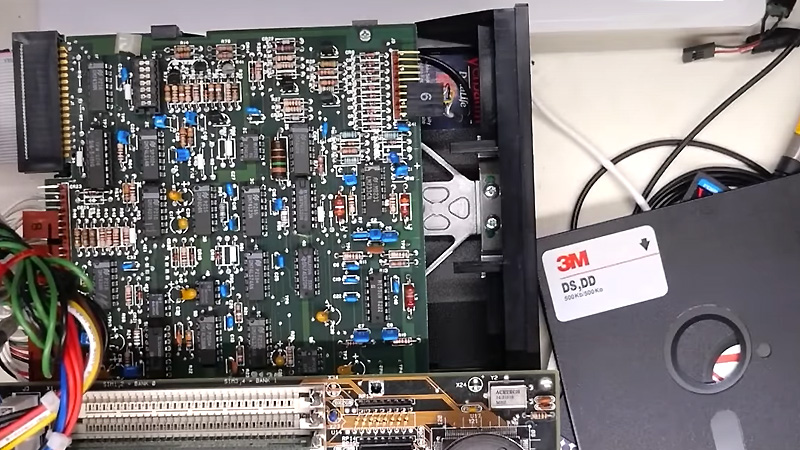In this episode of [Adrian’s Digital Basement], we dive into the world of retro computing with a focus on diagnosing and repairing an old full-height 5.25-inch floppy drive from an IBM 5150 system. Although mechanically sound, the drive had trouble reading disks, and Adrian quickly set out to fix the issue. Using a Greaseweazle—a versatile open-source tool for floppy disk diagnostics—he tests the drive’s components and explores whether the fault lies with the read/write head or electronic systems.
The repair process provides fascinating insights into the Tandon TM100-1 floppy drive, a key player in vintage computing. Adrian explains how the drive was designed as a single-sided unit, yet hints at potential double-sided capability due to its circuit board, raising possibilities for future tweaks. Throughout the video, Adrian shares handy tips on ensuring proper mechanical maintenance, such as keeping lubrication in check and ensuring correct spring tension. His attention to detail, especially on termination resistors, provided vital knowledge for anyone looking to understand or restore these old drives.
For fans of retro tech, this episode is a must-watch! Adrian makes complex repairs accessible, sharing both technical know-how and nostalgic appreciation. For those interested in similar hacks, past projects like the Greaseweazle tool itself or other Amiga system repairs are worth exploring. To see Adrian in action and catch all the repair details, check out the full video.















As a side note – the initial 5-1/4 drives we used at Q1 for the Micro-Lite systems had a ‘wow’ problem – there was a one rotation long speed variation that interfered with reading when the disk was written to, inserted and then replaced, and we/I resolved by removing a cap in the DC motor speed control circuit. It didn’t exist in the 8″ drives because their spindle motor was AC synchronous .
Love Adrian’s Digital Basement, wish I had one iota of his skill, and 1/100th of all the candy people send him!
I like him enough, I can’t stand that a video explaining 20 min with of content takes an hour and a half as he goes off in the weeds constantly
I actually like that, guess we’re just different.
Love Adrian’s videos, always excellent retro computing content.
I had a guy come to me with 5.25 disk he needed (wanted) to get the data off of.
I have several pc drives for this (4 to be exact) but the computer i had was a clunky old 386 running DOS 3.11 with a dead bios battery (which means every time i changed drives I had to reset the bios to read it)
After about 12 tries, I noticed the disk had a bend along one side (an indicator that it had been stored on its side). So I slit open the side and removed the media and re-sleeved it into a virgin disk (I happen to have a few BOXES of these, so no great loss).
Was able to finally read it (after remembering all my DOS commands) and transferred it to a 3.5 disk.
Took it to another machine running xp with a working 3.5 and a usb port. transferred everything over to a usb drive and took it to my laptop for editing the files.
What’s that?
What could possibly be so important to justify so much effort?
Ping pong scores from 1969, in word perfect. It took longer to edit the files than it did to transferre them off the 5.25 disk in the first place. But I must admit, It was sort of fun.
You clearly haven’t realized that disguising the keys to your nuclear detonator or bitcoin wallet to resemble ping pong high scores is the first line of defense. If casual observers don’t even realize it’s encrypted data, then it’s much less likely the data is put into the hands of people who might be able to decrypt it.
Lol, one mans trash is another many old ping pong scores.
Wasn’t that when US played China in that game and they called it ping pong diplomacy?